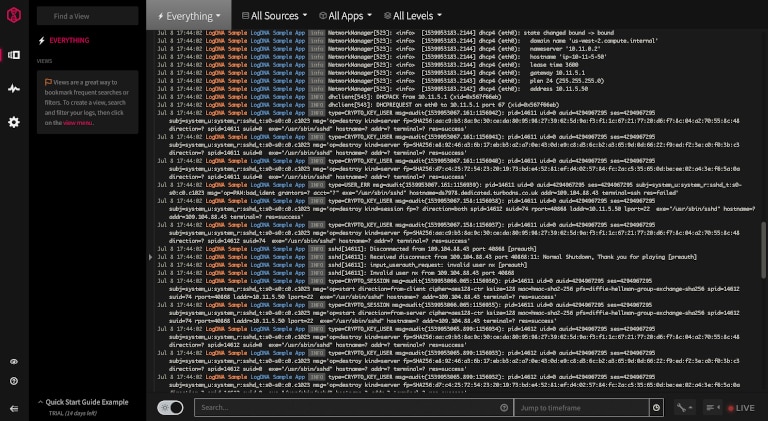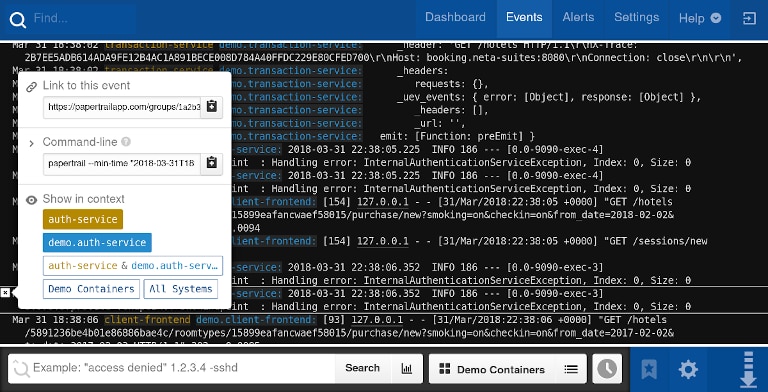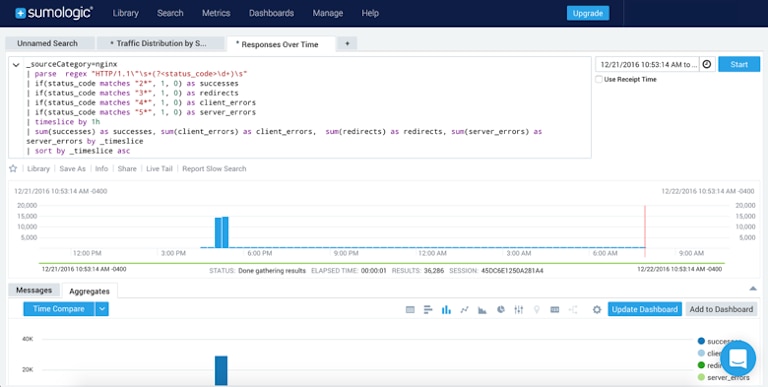IT teams in modern organizations need to maintain and manage their ever-expanding application and infrastructure ecosystems through continuous monitoring. IT setups have evolved significantly over the years and contain legacy equipment, cloud-based and virtualized resources, and numerous endpoints, including employees’ personal devices. In this complex environment, ensuring 24/7 availability for mission-critical applications isn’t easy. Amidst all this, logging as a service (LaaS) has become crucial for supporting connectivity, productivity, and security in modern IT and DevOps setups.
In this article, we’ll discuss what LaaS is and how it helps in log management, and we’ll provide a brief description of the best LaaS providers currently on the market.
What Is Logging as a Service?
Logging as a service, or LaaS, is a cloud-based centralized log management service. It ensures reliable log aggregation and faster analysis for troubleshooting and understanding trends, and it includes long-term log archiving for compliance purposes.
Why Do You Need Logging as a Service?
Traditionally, IT teams employ log viewers to view system logs directly or SSH into servers to access logs remotely. With these methods, they can find issues on a particular server or device. However, these methods of log analysis and troubleshooting have become impractical over the years; today, even small organizations have distributed cloud-based resources. With a large volume of logs coming from numerous devices, applications, containers, and more, it’s difficult to manage logs reliably.
This is why teams rely on cloud-based centralized servers for log management. Though there are open-source tools available to set up cloud-based logging, commercial LaaS providers offer the following major advantages:
Easier Provisioning
LaaS providers offer a self-service portal and quicker setup, allowing you to start log aggregation without major configuration challenges. Whether it’s your on-premises system logs or cloud-based logs from Docker, Kubernetes, etc., cloud logging ensures all your logs are collected securely and reliably in a centralized location.
Higher Scalability
Creating a logging setup and keeping a dedicated staff for its maintenance and upgrades can distract organizations from their real work. Furthermore, it’s not easy to create scalable storage capable of meeting spikes in log volumes. LaaS offers higher scalability, ensuring none of your logs suffer a loss due to storage issues. You can also view and modify your log retention policies centrally without worrying about infrastructure constraints.
Faster Log Analysis
Traditional log analyzers can struggle to provide quick results for search queries as log volumes grow. LaaS providers offer various advanced features for log analysis, allowing you to view your logs in real time and get quick search results.
Top 5 Logging as a Service Providers
1. LogDNA

LogDNA is a modern log management solution designed to support logs with a wide range of on-premises and cloud-based resources. You can collect logs easily using syslog, code libraries, and more than 30 integrations. It also offers automated parsing, helping you easily extract information from your logs. You can use numerous filters to find useful information and isolate noise, and its easy integration with third-party tools for alerts adds agility to IT operations and troubleshooting.
2. Papertrail

SolarWinds® Papertrail™ is a popular solution designed to simplify the aggregation of logs from numerous applications, systems, and platforms. The service offers quick setup, giving you instant visibility into your distributed environment. With centralized logging, Papertrail streamlines log monitoring, search, and analysis. You can tail logs using its real-time log viewer, which offers a stream of logs you can pause at any moment. In this stream of logs, you can also scroll up or down to navigate to events of interest. Papertrail also allows you to skip to a specific time frame to inspect error logs for troubleshooting. Additionally, Papertrail allows for faster searches you can perform using a browser, command-line interface, or API.
With Papertrail, you can scan all incoming logs for anomalies and get real-time alerts and summaries via email or any other preferred mode of communication (e.g., SMS, Slack, PagerDuty). These alerts give you real-time awareness about system activity and application performance. You can learn more about the features and advantages of Papertrail here.
3. Sumo Logic

Sumo Logic is a powerful cloud-based log management tool designed to help organizations gain crucial insights into the performance of their applications and infrastructure. In addition to all the basic log aggregation features, the tool offers advanced features for root cause and trend analysis. The live tail feature makes troubleshooting highly efficient in production environments without requiring system-level access or CLI commands.
4. Loggly

SolarWinds Loggly® is another highly capable cloud-based log management solution. Loggly supports all popular log formats and can automatically parse your incoming logs into various fields for quicker analysis. These parsed logs can be viewed in the tool’s intuitive Dynamic Field Explorer™, which allows you to click and search through different fields without typing multiple queries. Its quick search, advanced visualization, and easy integration with DevOps tools like Slack, Jira, and GitHub make Loggly a good option for enterprises.
5. Splunk

Splunk is an advanced solution for analyzing large volumes of logs and events for security information and event management (SIEM). The solution offers advanced machine learning-based analytics. Additionally, it helps organizations correlate multiple events from different systems and get real-time awareness with advanced visual dashboards. Though it offers cloud-based log management, the solution is quite advanced and is suitable for large enterprises with massive budgets.
How to Choose a Log Management Solution
All major LaaS providers offer easy setup and common features for log aggregation, parsing, search, filtering, live tail, and more. However, many of these tools are complex and can take significant time and effort for fine-tuning. If you’re looking for a simple, powerful, and lightweight log management solution to help you get started quickly, we recommend SolarWinds Papertrail. As a cloud-based service, Papertrail is popular among DevOps teams because it offers select features carefully designed for effortless troubleshooting in live environments. Moreover, you can sign up for a lifetime free trial of Papertrail to explore its features and customize a plan according to your organization’s needs.
